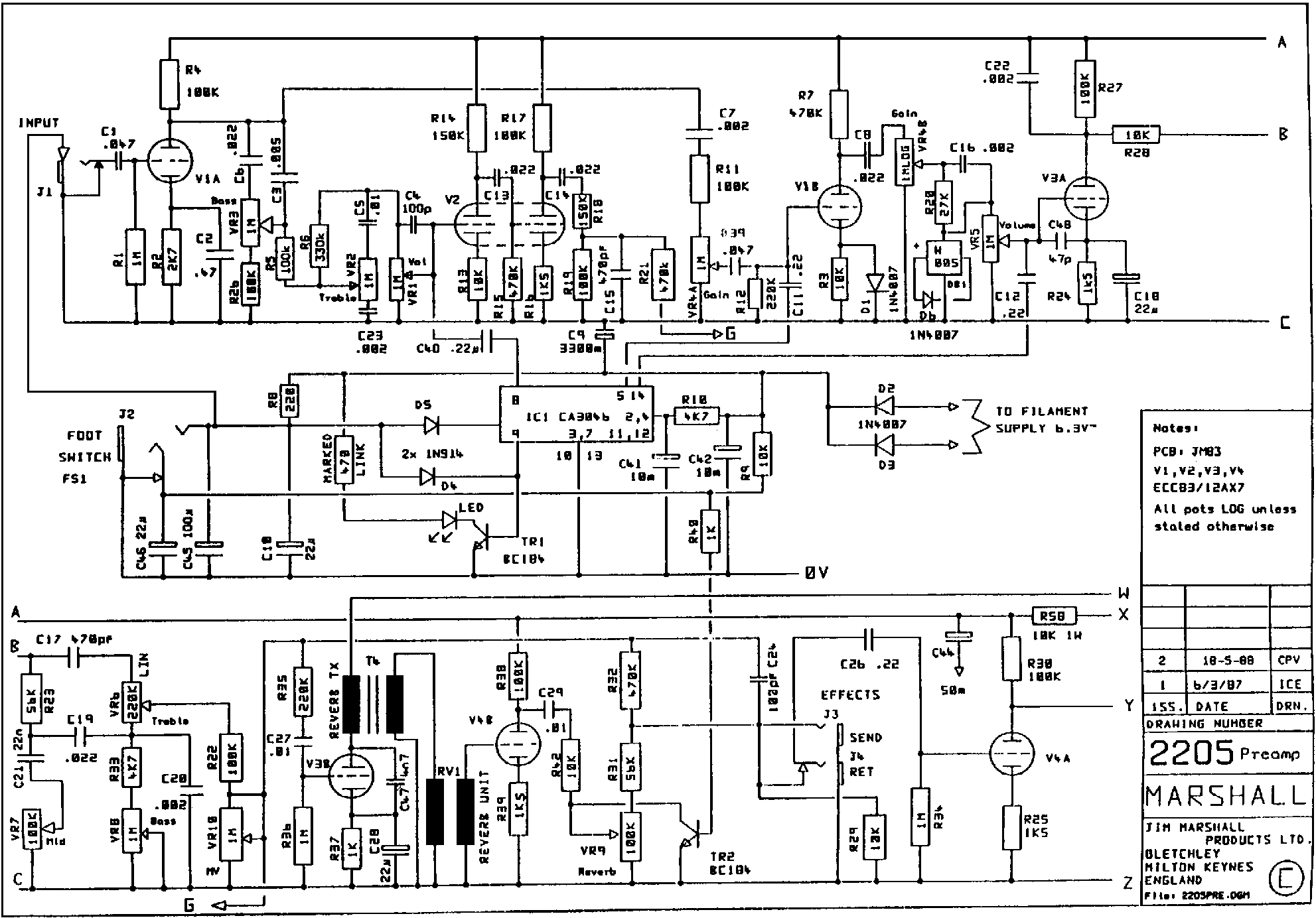This is a question about a specific amp, but its really a question about the subject in general, this amp is just an excellent example of the passive loop "drop your signal 20db before the loop then use a recovery stage to get it back" phenomena I see people complain about with passive loops.........
Looking at the schem for a Marshall 2205:

There is R29, a 10k resistor to ground at the send of the loop.
This resistor is problematic, in that its effect on the tone is to slam a whole lot of signal to ground and make the whole amp sound dull as heck. High end goes bye bye in a big way. How does Marshall deal with this? Take a look at R32/C24, which is a resistor serving as essentially a fixed master volume with bright cap.
This brightens things back up, but it leaves a brittle edge on the overall tone of the amp. Slamming most of your signal to ground and then using a bright cap is not the same as just not slamming your signal to ground in the first place, tonally.........
Now, you can eliminate R29 and C24, which takes off the brittle edge and makes the amp sound much more full (and a WHOLE LOT hotter, too hot given the gain of V4a) but thats not ideal either because it screws up the loop.
My questions given the above are:
a) What affect does that 10k R29 have on the output impedance of the loop?
b) If I want to eliminate C24 and raise R29 so its not bleeding so much signal to ground and dulling things up, whats a reasonable value? 220k? Other than raising the value of the loop send a whole lot, what is that doing to loop output impedance?
c) If you raise the value of R29 way up, you get a hotter signal out of the loop, and you are hitting V4a so hard that any but minimal channel volume settings will clip the V4a and everything after it, so whats the best way to drop your signal back down before it hits V4a without, again, messing up the tone? Drop R34 from 1M grid leak to ..? Something else? Note no grid stopper at V4a as well.
Looking at the schem for a Marshall 2205:

There is R29, a 10k resistor to ground at the send of the loop.
This resistor is problematic, in that its effect on the tone is to slam a whole lot of signal to ground and make the whole amp sound dull as heck. High end goes bye bye in a big way. How does Marshall deal with this? Take a look at R32/C24, which is a resistor serving as essentially a fixed master volume with bright cap.
This brightens things back up, but it leaves a brittle edge on the overall tone of the amp. Slamming most of your signal to ground and then using a bright cap is not the same as just not slamming your signal to ground in the first place, tonally.........
Now, you can eliminate R29 and C24, which takes off the brittle edge and makes the amp sound much more full (and a WHOLE LOT hotter, too hot given the gain of V4a) but thats not ideal either because it screws up the loop.
My questions given the above are:
a) What affect does that 10k R29 have on the output impedance of the loop?
b) If I want to eliminate C24 and raise R29 so its not bleeding so much signal to ground and dulling things up, whats a reasonable value? 220k? Other than raising the value of the loop send a whole lot, what is that doing to loop output impedance?
c) If you raise the value of R29 way up, you get a hotter signal out of the loop, and you are hitting V4a so hard that any but minimal channel volume settings will clip the V4a and everything after it, so whats the best way to drop your signal back down before it hits V4a without, again, messing up the tone? Drop R34 from 1M grid leak to ..? Something else? Note no grid stopper at V4a as well.

Comment